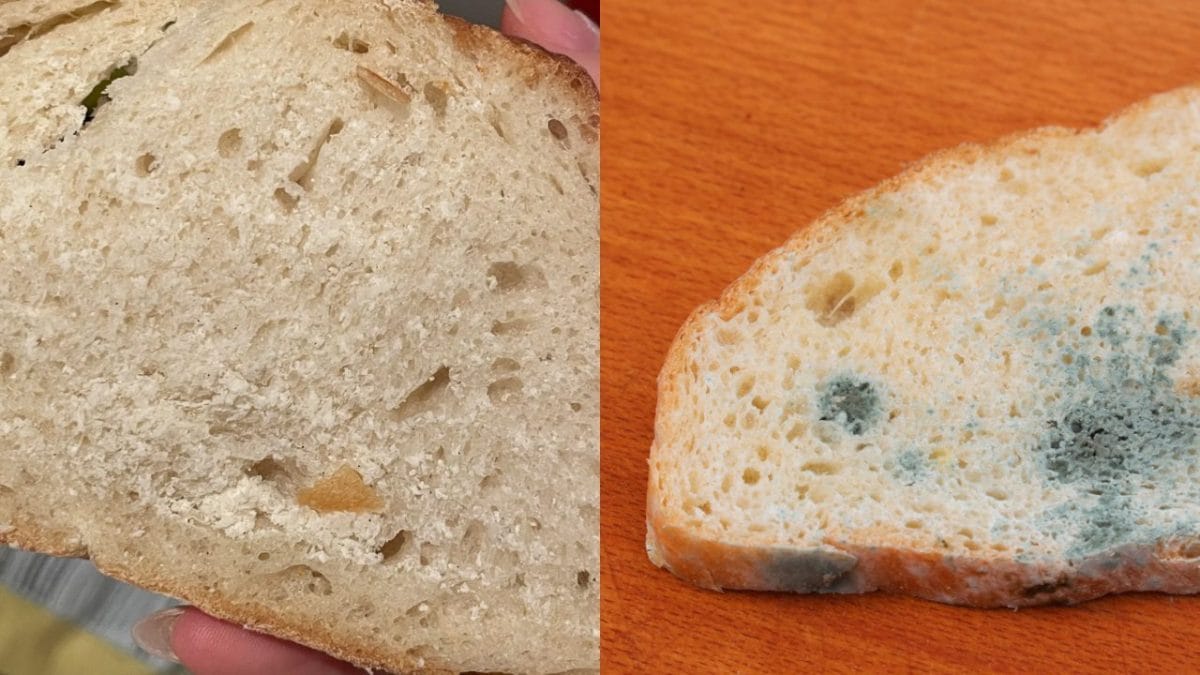
You open the bag of bread you bought the day before, examine it carefully, and there they are: strange, suspicious white spots. Your instinct tells you to throw it away, the voice in your head whispers, "It's mold, don't risk it." But what if these stains were a completely natural process, even predicted by food chemistry?
This is precisely what the video posted by @rubricalimenti on TikTok clearly and easily explains. A short but well-researched piece of content, it debunks one of the most widespread misconceptions in the world of home and artisanal breadmaking: those white areas in the crumb are not mold, but the result of a process known as starch retrogradation.
What is Starch Retrogradation?
To understand this phenomenon, we need to take a step back and look at what happens to starch—one of the main components of flour— during and after cooking.
During baking, starch —specifically its two main components (amylose and amylopectin)—in the presence of heat and water undergoes a process called gelatinization. The crystalline structures break, the starch swells and disperses throughout the dough, helping to form the soft, moist, and airy crumb we love in freshly baked bread.
What happens after cooking? As it cools and time passes, something less visible but crucial happens: the starch molecules begin to recompact, rearranging themselves into more orderly shapes. This process is called retrogradation. In this phase:
- Amylose realigns itself after just a few hours.
- Amylopectin acts more slowly, but is responsible for the actual hardening of the crumb.
The visual result of this transformation can be the appearance of whiter, denser areas inside the bread, due to the different refraction of light on the new crystalline structures formed over time. The white spots are not mold, but areas where starch has crystallized: this is a physiological, not pathological, process, so the bread hasn't gone bad.
Mold Vs. Retrogradation: How to Tell The Difference?
Understanding whether we are dealing with a simple natural transformation or a real sign of deterioration is fundamental. Here is a practical guide to distinguishing starch retrogradation from actual mold.
Why is it important to know all this? Because in a world where there's so much talk of food waste, it's crucial to learn to distinguish a true sign of spoilage from a harmless phenomenon.
Storage and Temperatures: How to Avoid Excellent Retrogradation
A key factor is storage temperature. Often, to extend the shelf life of bread, it's stored in the refrigerator: nothing could be more wrong. Ironically, it's precisely the refrigerator temperature (around 4–6°C) that maximizes starch retrogradation. In practice, if you want to make bread hard quickly, store it there.
Helpful tips:
- If you don't plan on consuming the bread within 48–72 hours, it's best to freeze it.
- To revive stale bread, simply heat it briefly in the oven (140-176°F/60–80°C): the heat temporarily dissolves the starch crystals, making the crumb soft again.
- Store bread at room temperature, in breathable paper or cloth bags, to slow down moisture loss and hardening.
;Resize,width=767;)
